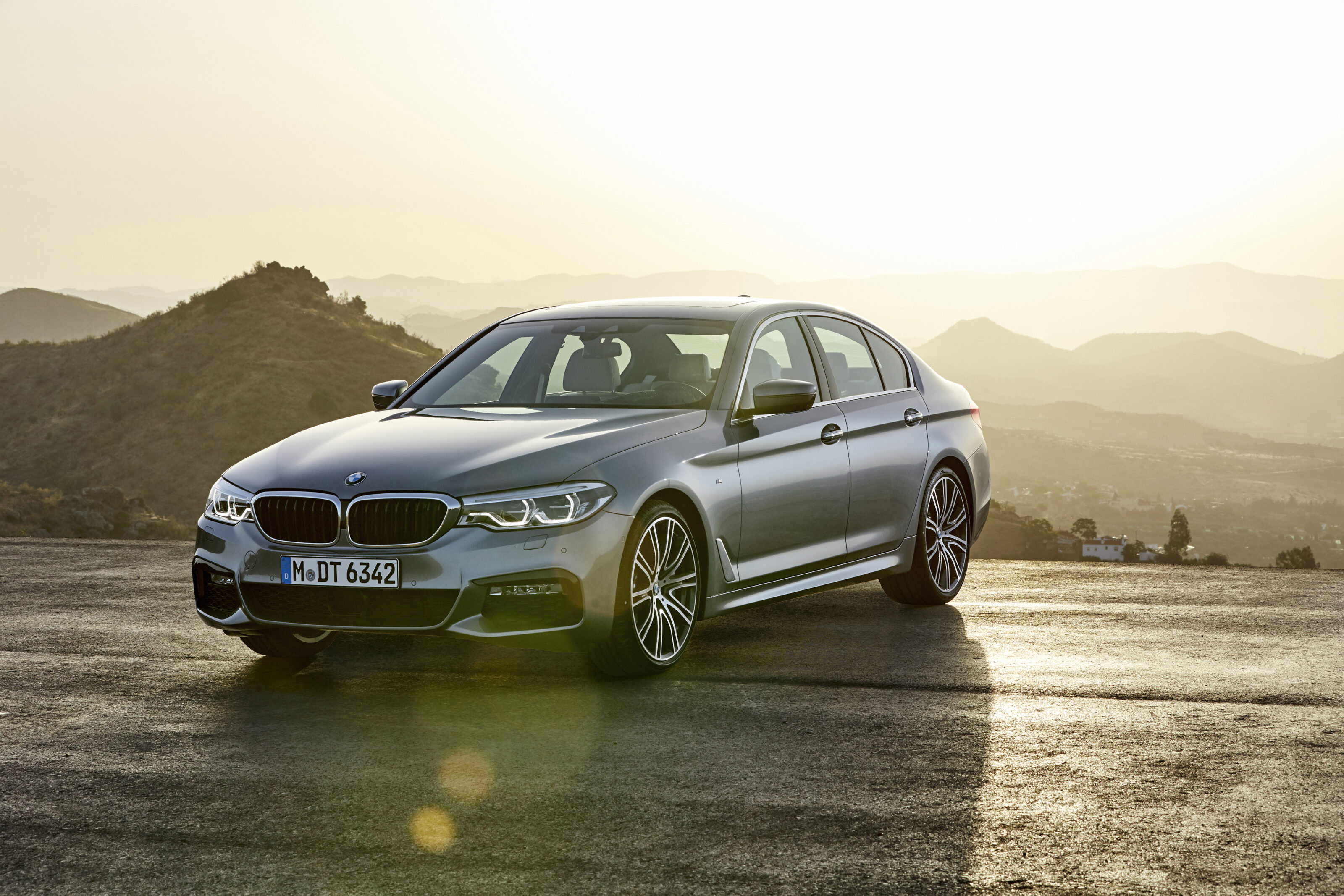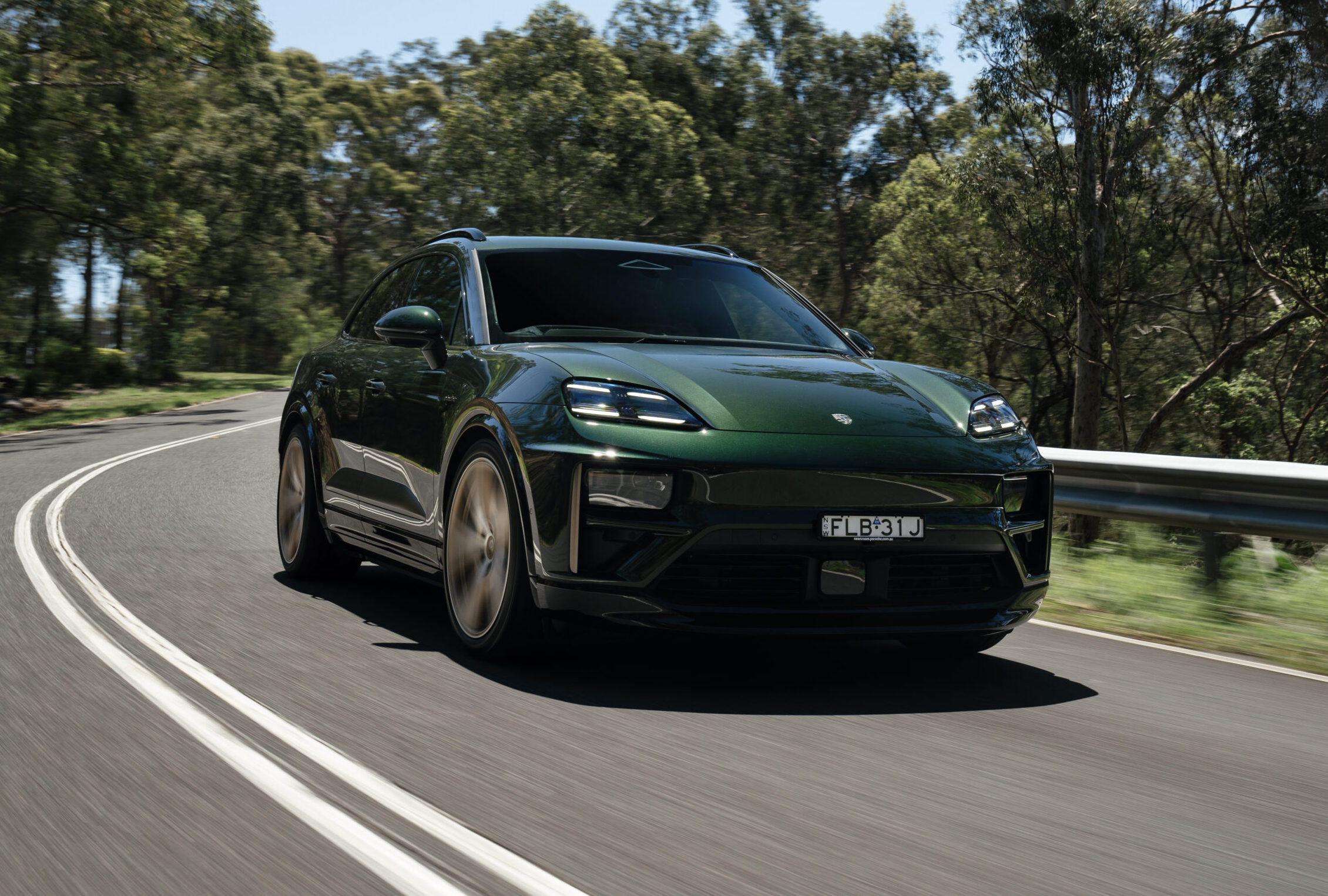
Even as SUVs increasingly rule the roads, luxury cars from Europe remain signs of status for the executive class. The new BMW 5 Series is a Commodore-size sedan that packs upper-class enginering and high-grade technology into an all-new shape. It’s BMW’s response to the recently launched E-Class of arch-enemy Mercedes-Benz.
Scheduled to arrive in March 2017, the new 5 Series line-up initially will be topped by the 540i model. Priced at $136,900, it’s powered by a new turbocharged 3.0-litre in-line six-cylinder engine. This is a member of the Bavarian brand’s new modular engine family, which also includes the turbocharged 2.0-litre four-cylinder of the less costly 530i. Both engines benefit from the latest additions to BMW’s extensive stock of engine know-how
While the 2017 BMW 5 Series is fractionally larger than the car it replaces, BMW engineers managed to cut weight by up to 100kg, mainly through the use of aluminium in the car’s body structure and chassis. Lightness is good for both fuel efficiency and performance.
The fresh exterior design features what BMW’s designers call the ‘twisted ribbon’. It’s a double crease in the sheetmetal, running from the front wheelarch to the C-pillar. Inside, the designers aimed for more opulence and greater user-friendliness.
But the company’s highest priority was to create a car better to drive than the E-Class…
STRENGTHS
- Agile, quick and comfortable, the 540i is a terrifically pleasant car to drive. The steering is very precise and the smooth-riding BMW corners with great confidence. Performance is very strong. The turbo six isn’t only muscular, it also sounds great. It teams very well with the eight-speed automatic that channels power back to the rear wheels.
- The spacious interior is beautifully made and thoughtfully designed. Classy materials and great craftsmanship are everywhere. Not so obvious is the work BMW has put into making the car’s features easier to use. Some of this is a bit gimmicky (see Weaknesses), but BMW’s rethink of the human-machine interface mostly makes things simpler to use than ever.
- Much of the technology in the 540i aims to make it a better tool for the executives and businessman who are the 5 Series’ typical customers. This is a car that can make good use of its connectivity. It also has driver-aid and active-safety systems that are up there with the best. Technologies like the 5 Series’ standard AEB (autonomous emergency braking) system reduce the chances of crashing.
- The same sensors and cameras that make AEB possible also are also used for the active cruise control system and the lane-keeping assistant. These cut the driver’s workload and are especially helpful in reducing fatigue. But the technologies would be even better if they worked more reliably.
- The 540i is equipped with the same gesture control tech introduced in the 2016 7 Series. The car recognises and responds to hand gestures made in an area above the gear selector. A finger-twirling motion, for example, will raise or lower audio volume. It’s hard to see any genuine advantage in this gimmicky technology.
- While there’s plenty of space in the rear of the 5 Series, the seat itself could be better. In a car like this, everyone should ride in real comfort. This is one area where the 540i probably isn’t as good as its Mercedes-Benz competitor, the turbo 3.0-litre V6-powered E400.
Mercedes-Benz E-Class, of course. The 540i has the better chassis and engine, while the E400 has an edge in advanced tech and interior bling. Also worthy of a look are the various models of the new Jaguar XF fitted with the company’s supercharged 3.0-litre V6 engine. Volvo’s new S90 comes only with four-cylinder engines, but brings a welcome serving of Scandinavian design flavour to the luxury sedan segment. The Lexus GS 350 with its non-turbo 3.5-litre V6 could also be considered a contender. Bland to look at and bland to drive, but its prices and quality are very attractive.




